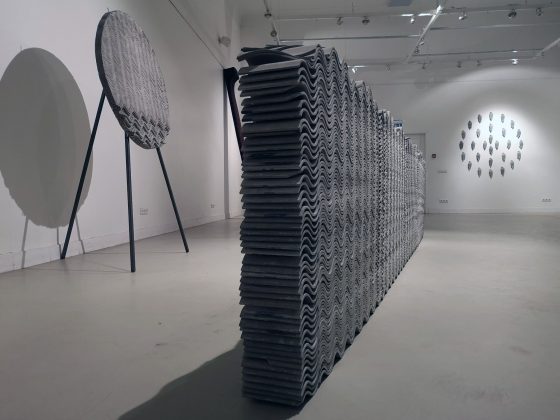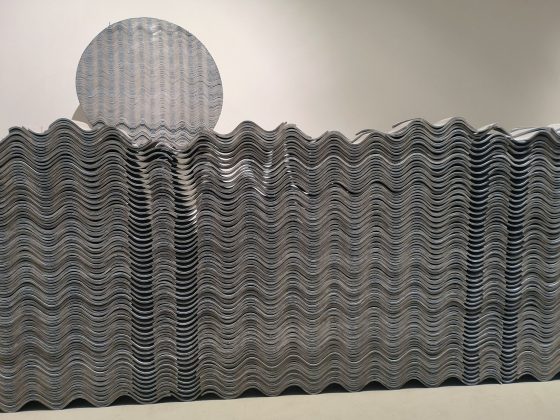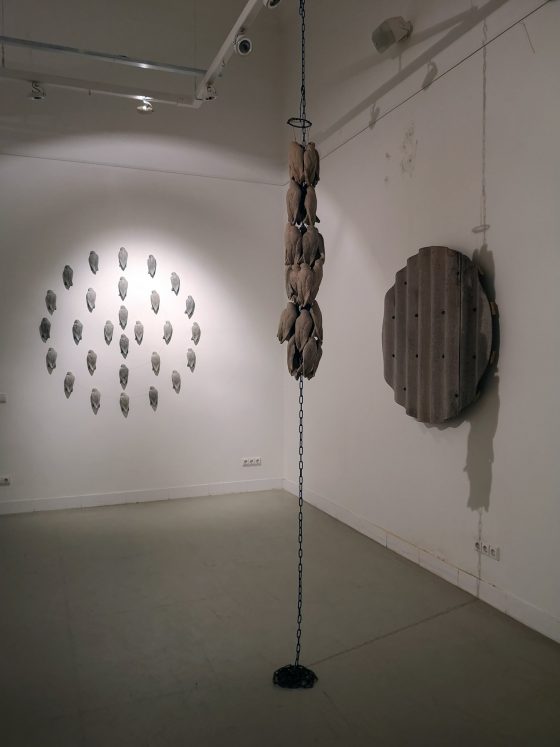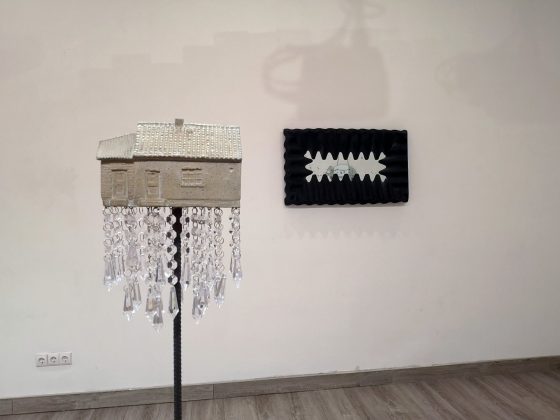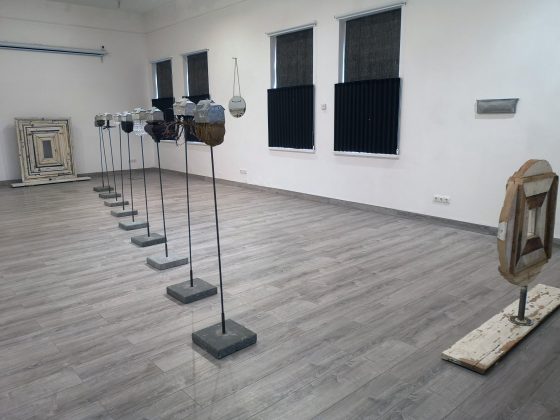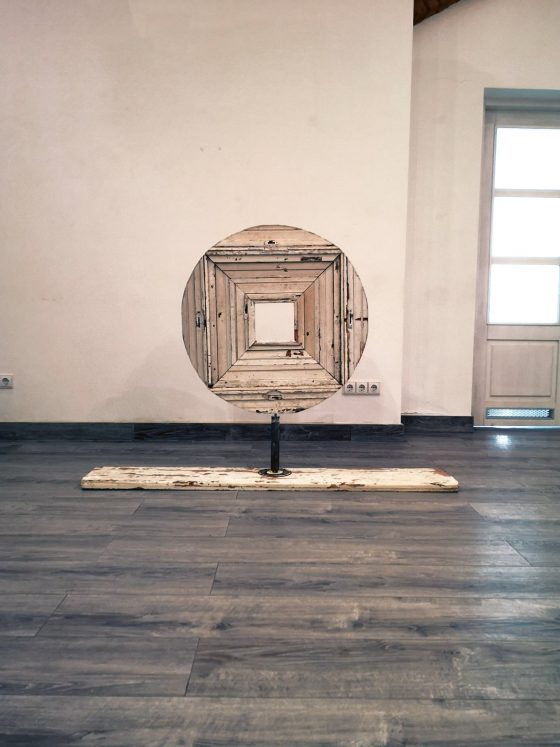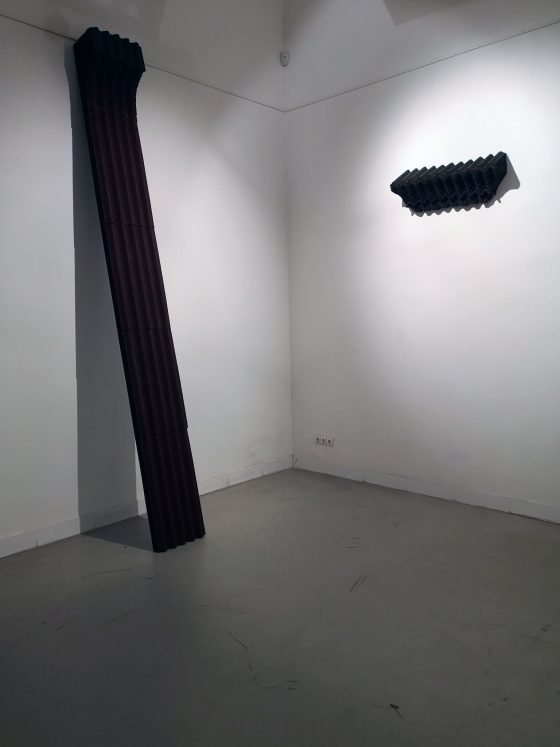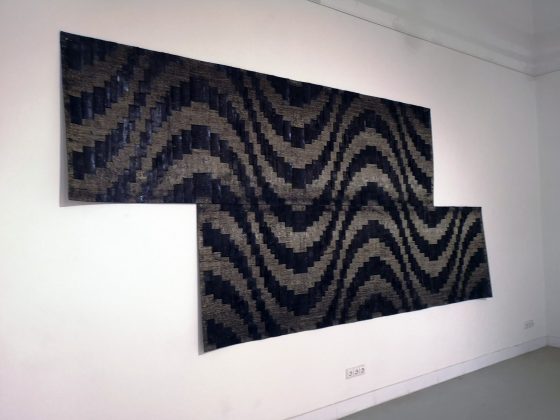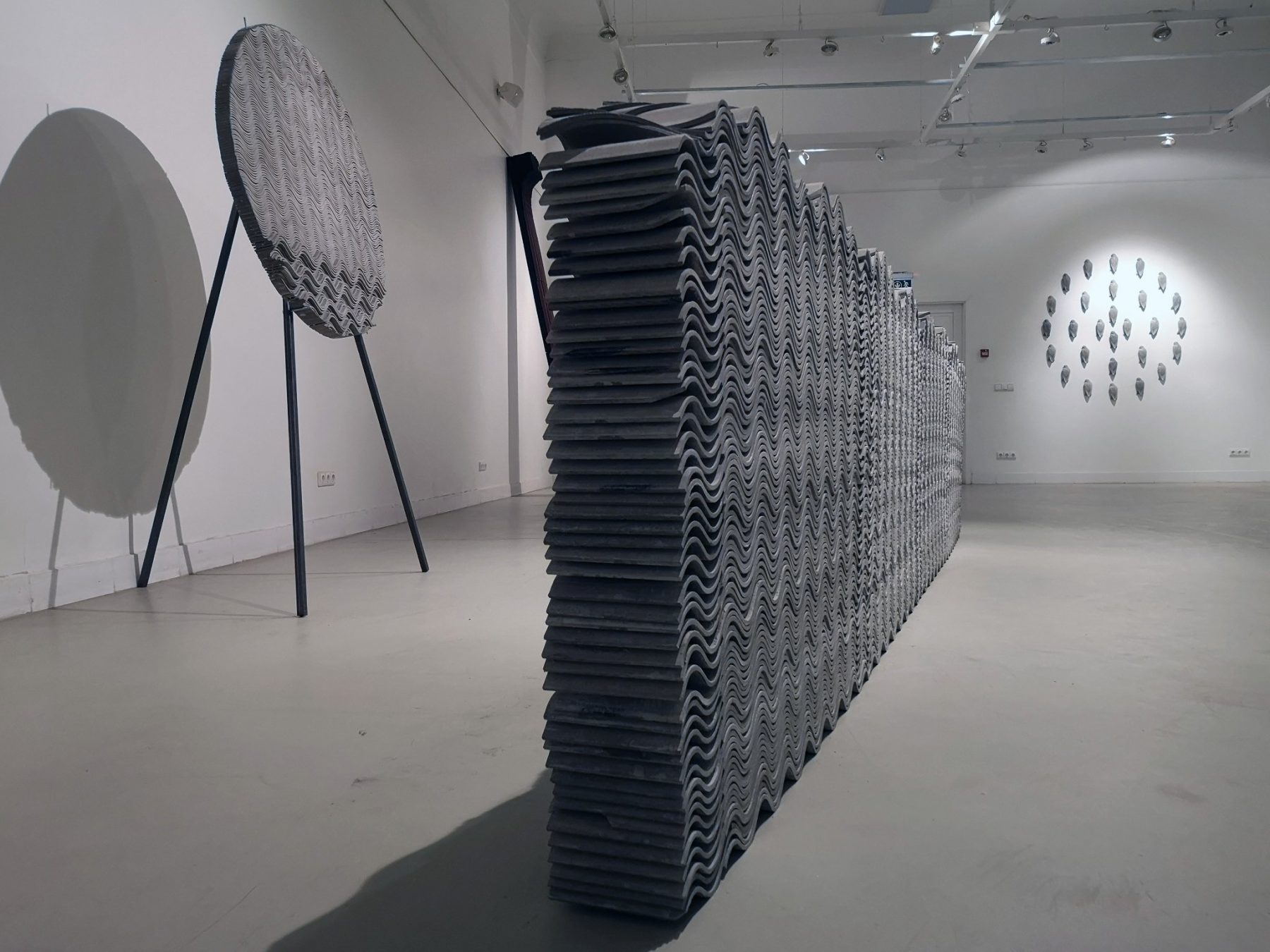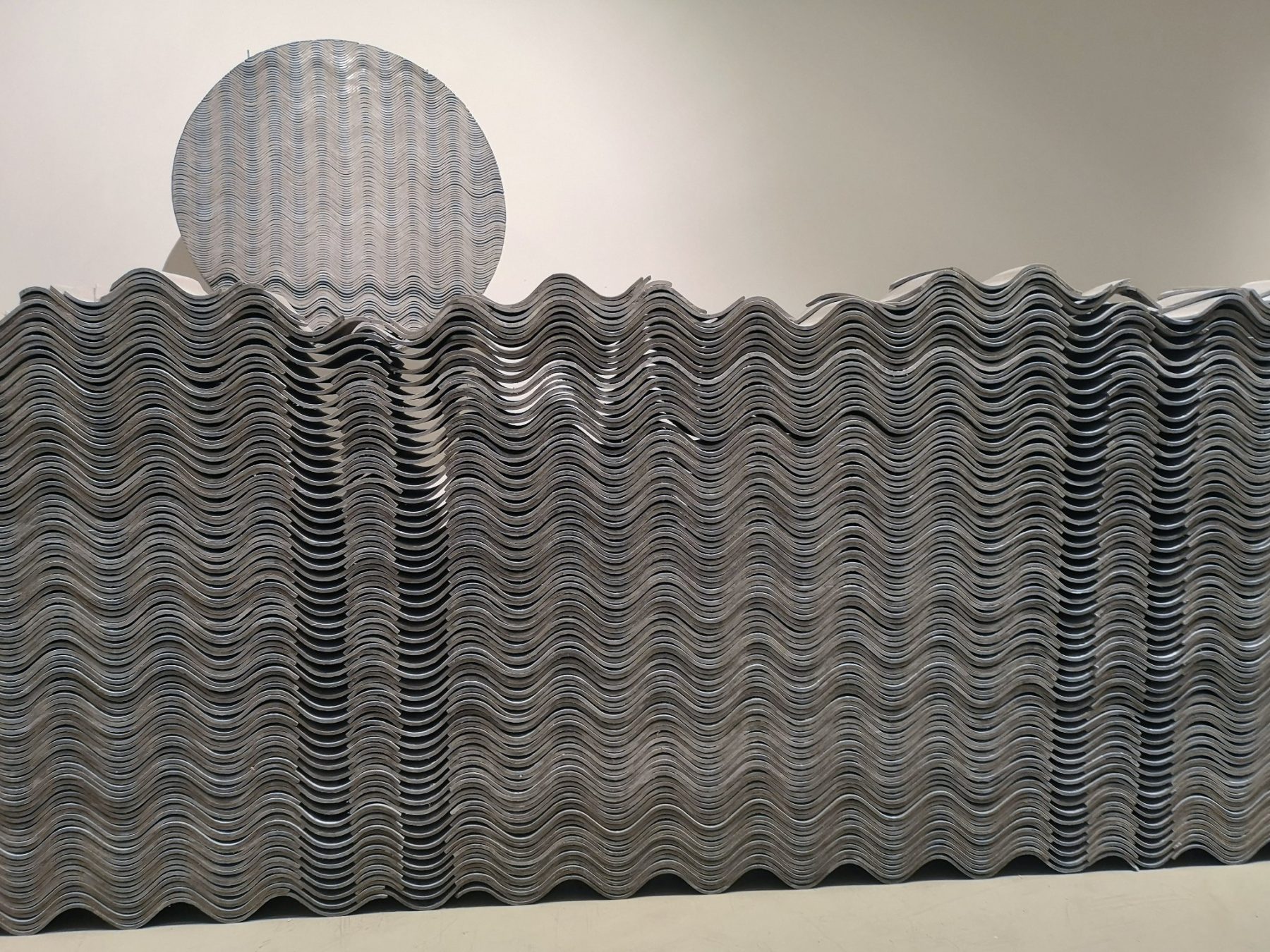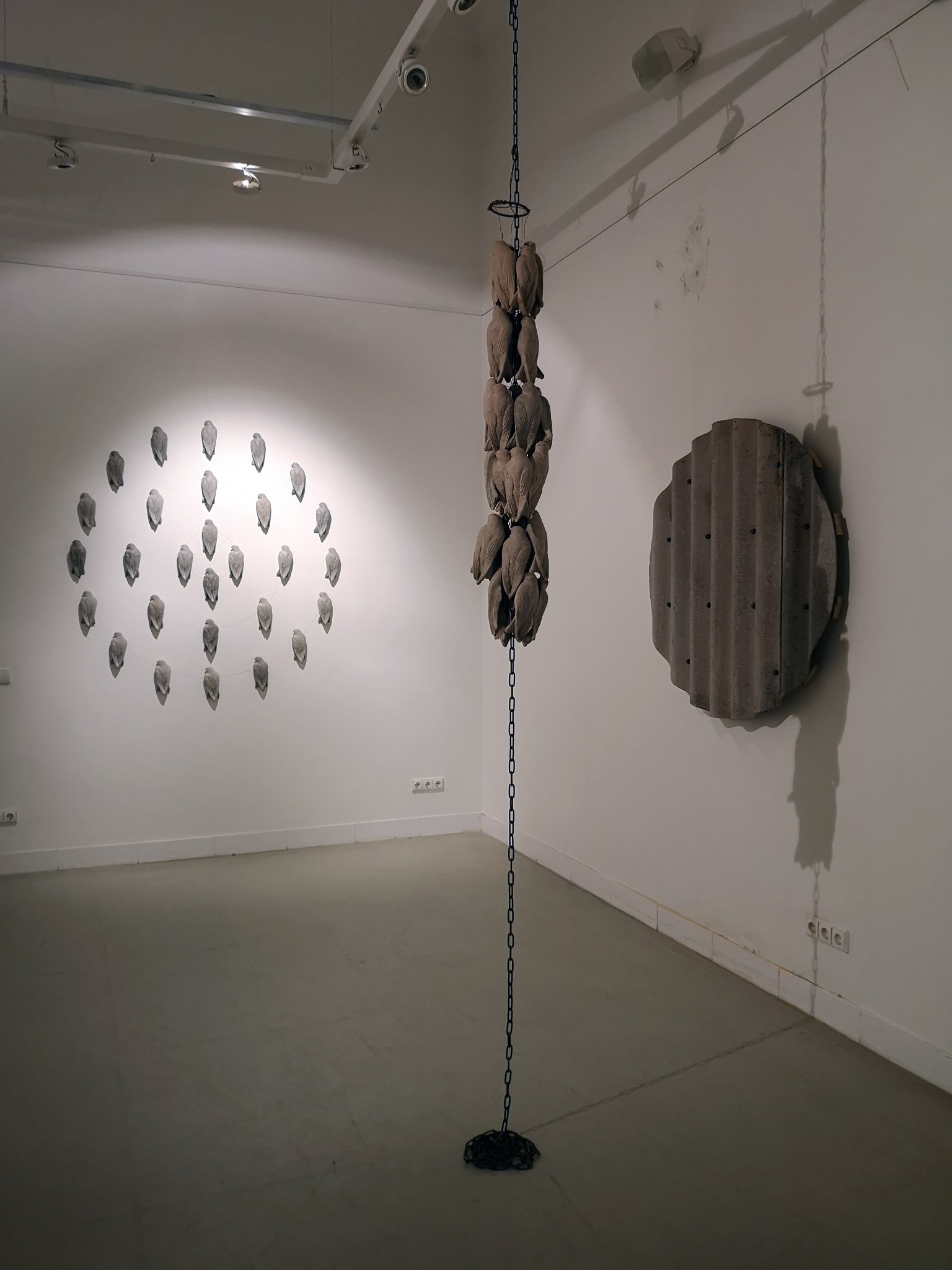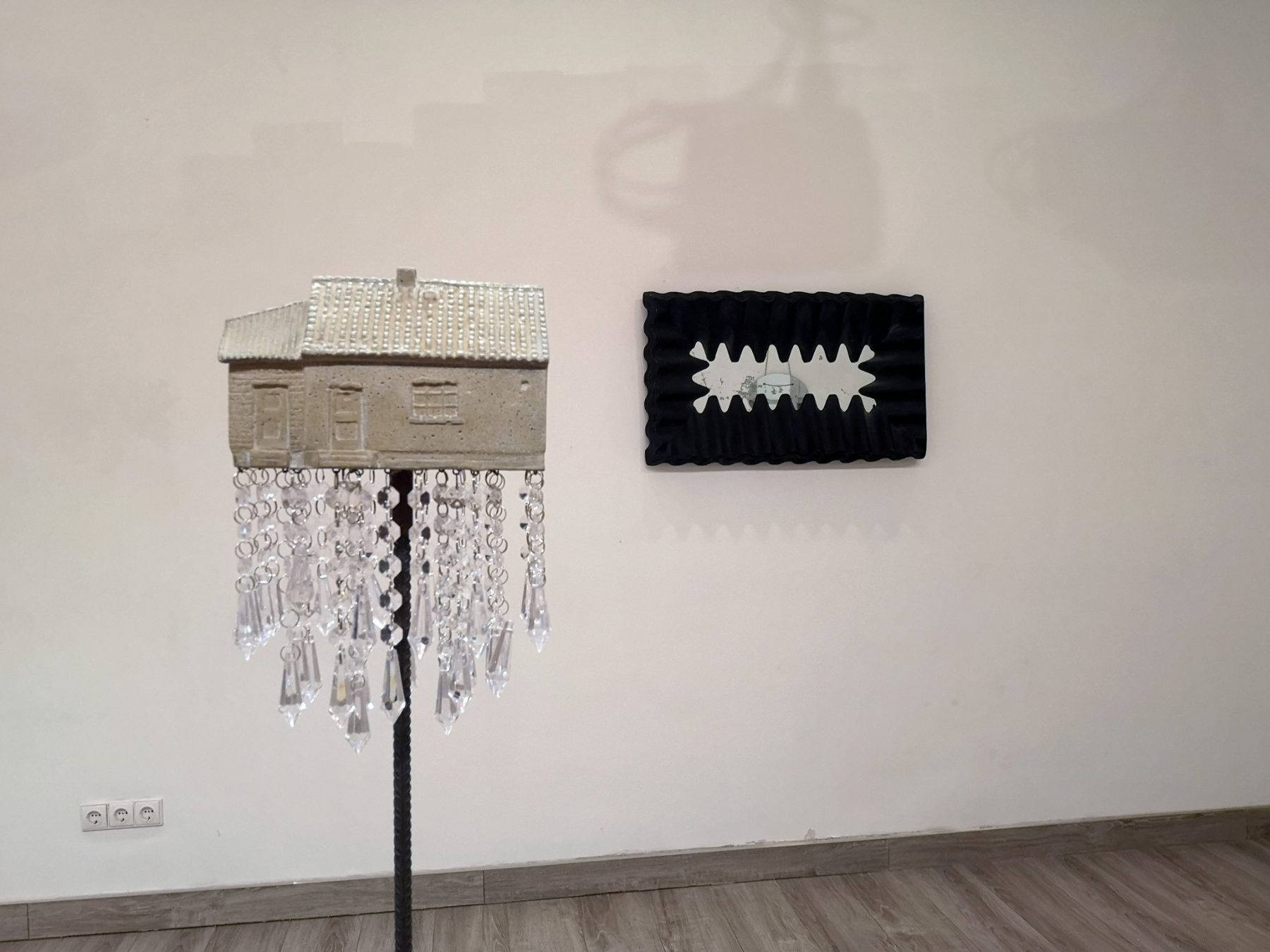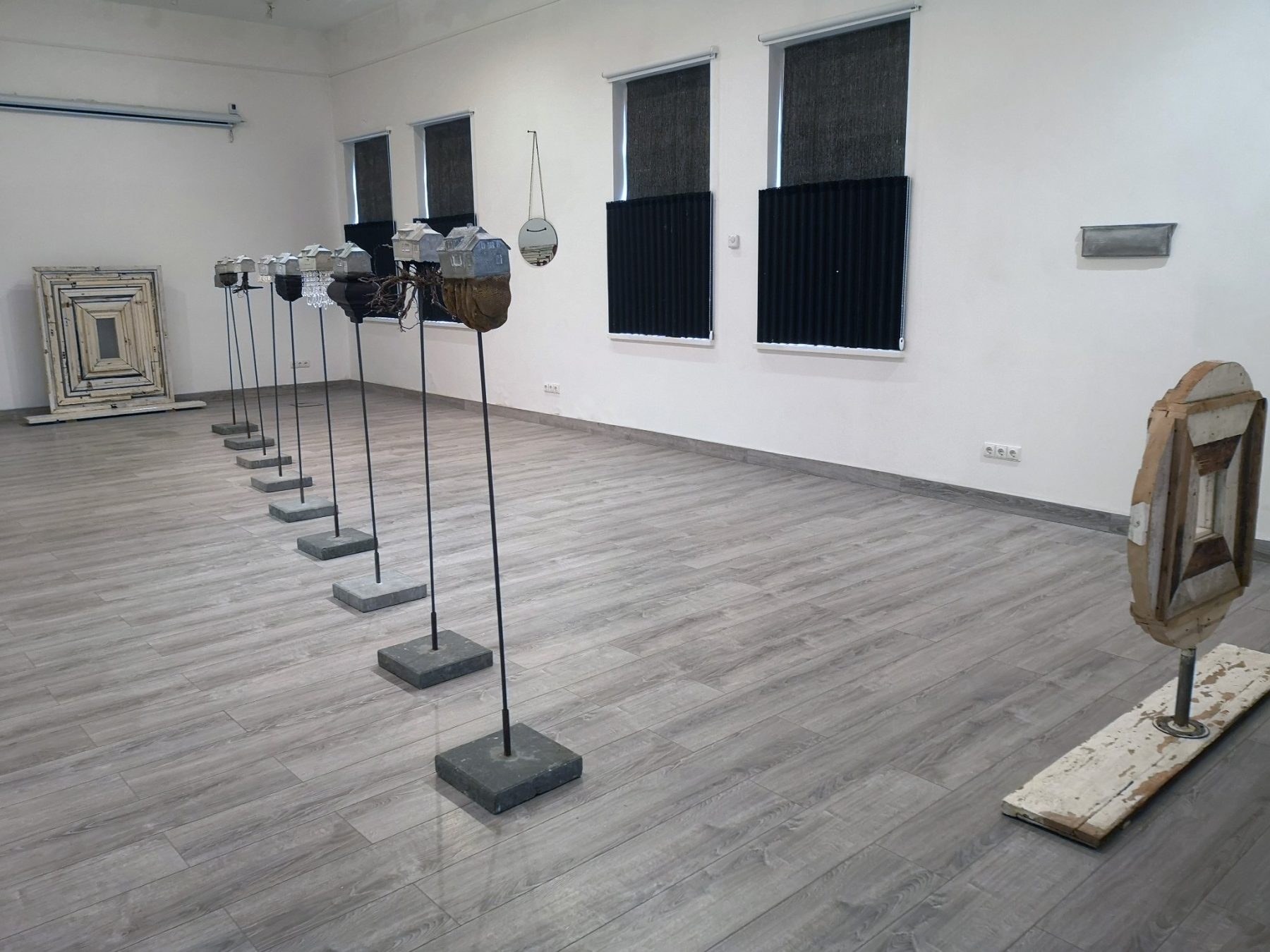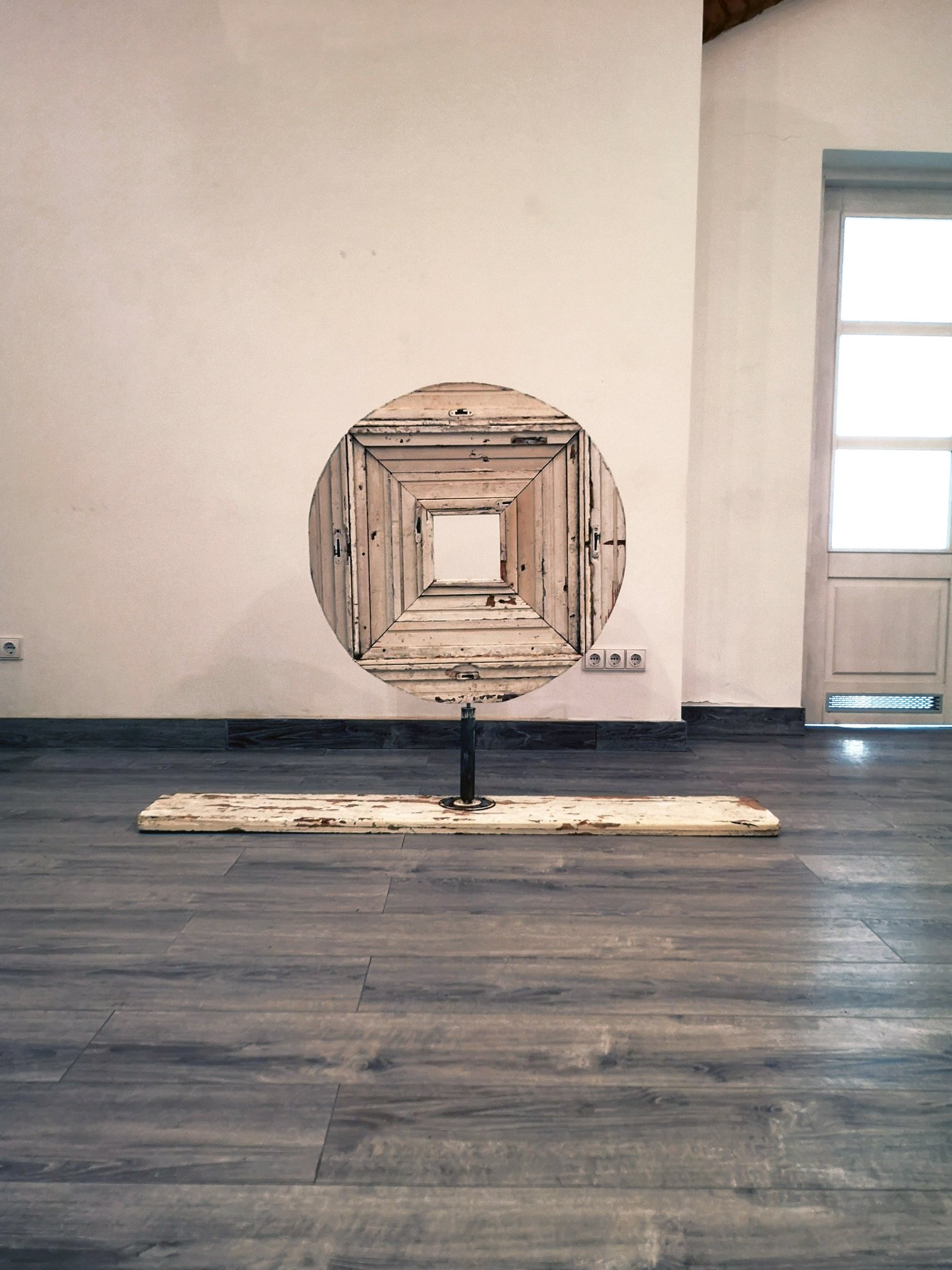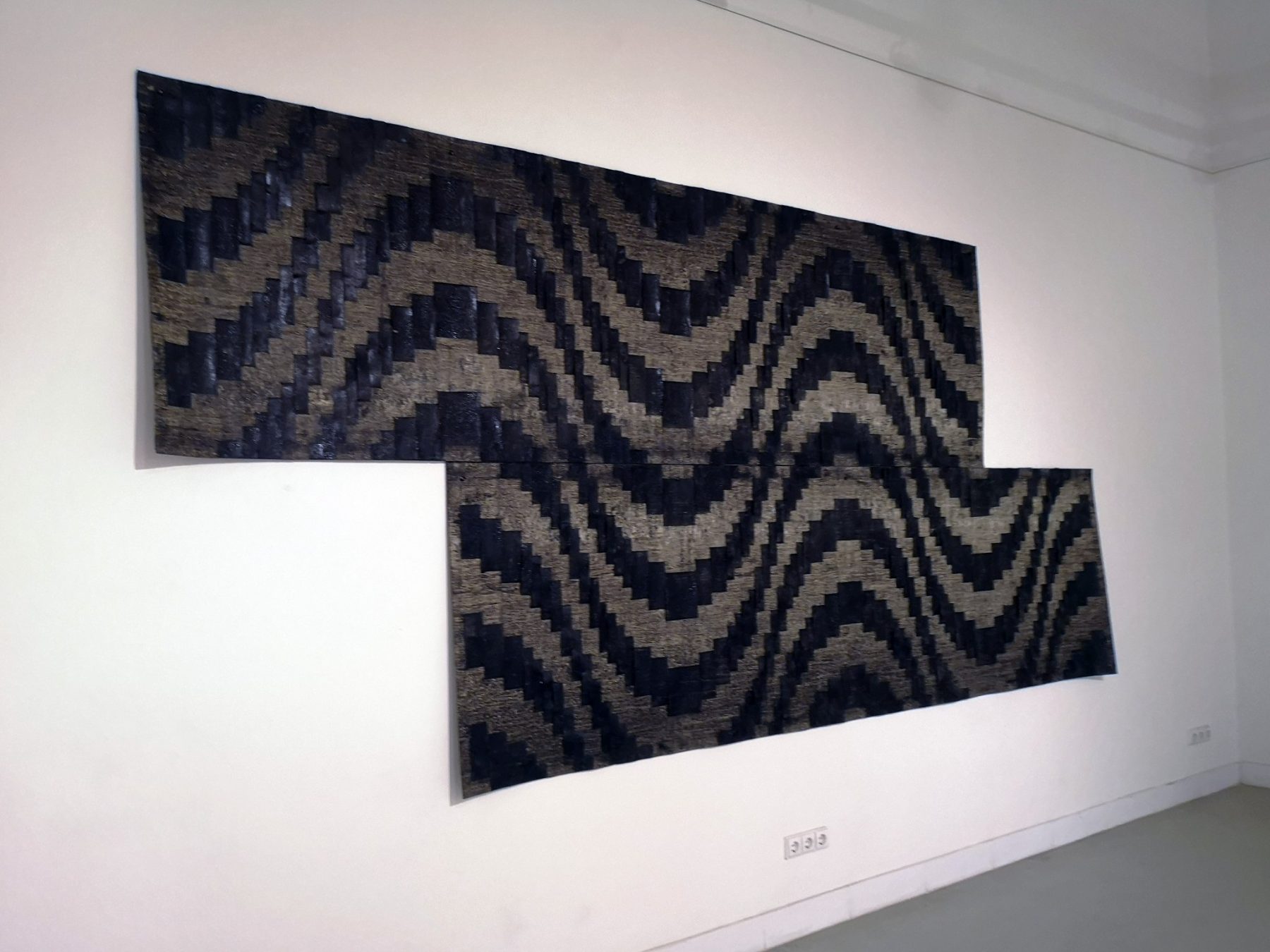Skulptors Andrius Erminas’ exhibition „Cross Section“ in the VDA gallery in Telšiai
The solo exhibition introduced new and previous works, both of whom convey important interpersonal and existential themes. Here, the cross-section is to be understood as a thin line dividing matter and the subconscious experience of a person, allowing to discover the dialectical juxtapositions imbued in the artworks, reflecting such opposing notions as life and death, culture and nature, past and present. Andrius Erminas is well known due to his conceptual sculptures and installations, which often depict various delicate marginal states of being. These reveal themselves through symbols and references, ones that bring back memories and weave new stories. The artist is known for utilizing materials like- cement, roots, honeycomb, found objects, and their interconnections – all of which allow him to develop the peculiar layering of time and space in his artworks. The exhibition of Andrius Erminas analyzes those moments in life that are shared amongst all, welcoming subjective interpretation and subsequent creation of narrative threads that stand on the foundations of personal experiences.
Some of the most important creative principles employed by A. Erminas are the use of visual references alluding to specific historical events, the construction of a fictional narrative, and the transformation of old, easily recognizable everyday objects into new symbolic sculptural pieces. Using unexpected interconnections, A. Erminas changes both the meaning, and the inner characteristics of objects, turning them into symbols filled with tension, philosophical ideas, and personal experiences – giving meaning to the latter is especially important, as it results in the revelation of the notions of individualism and authorship.
Lithuanian sculptor Andrius Erminas was born in 1971. He graduated with a bachelor’s degree in fresco-mosaic studies, followed by a master’s degree in sculpture at the Vilnius Academy of Arts. The artist’s creativity has earned him various national scholarships for art and culture, as well as prizes and grants for his exceptional skills as an encouragement for their future development. He actively takes part in group and solo exhibitions and art projects both in his home country and abroad (United Kingdom, Ukraine, Israel, Austria, Bulgaria, and Germany). His artworks have been acquired by private collectors and are part of the permanent collection of the modern art Museum MO in Vilnius.
The project was partly supported by the Lithuanian Council for Culture.

